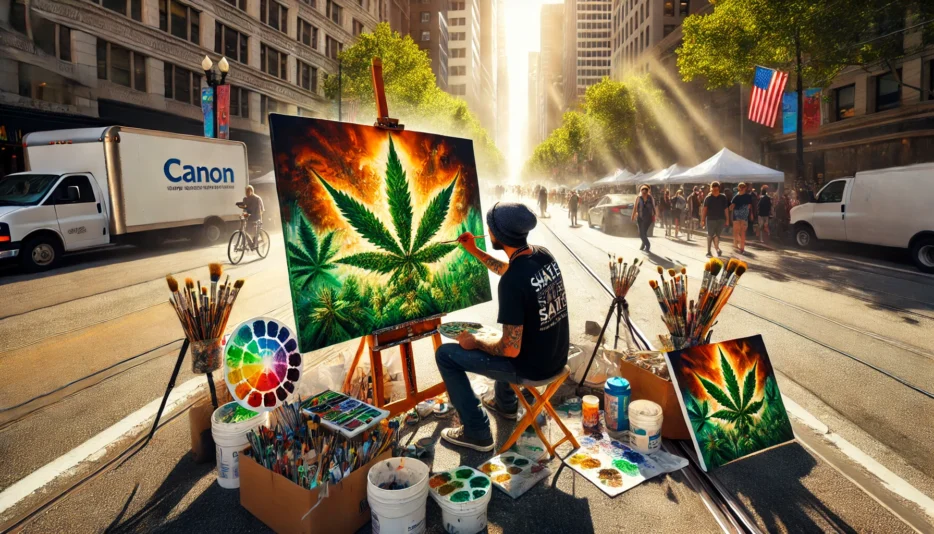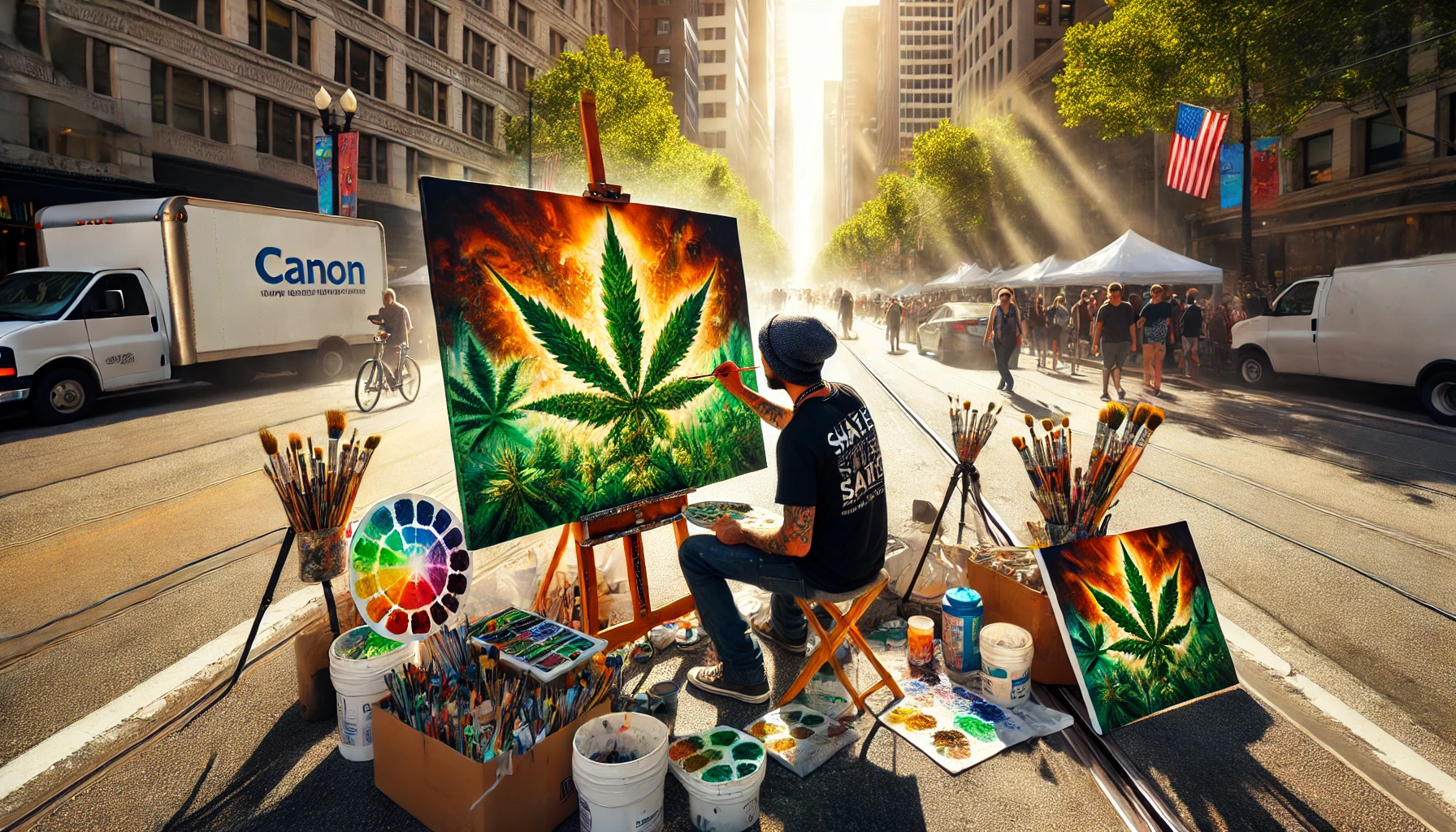The relationship between cannabis and street art can be traced back to the counterculture movements of the 1960s and 70s.
During this time, cannabis was a symbol of rebellion, social freedom, and anti-establishment values while street art was evolving as a form of expression for marginalized groups, often featuring bold political messages.
Cannabis naturally found its way into these visual statements, becoming intertwined with the broader messaging of resistance and non-conformity.

The Evolving Relationship of Cannabis and Street Art
In the decades since, cannabis imagery has shifted from subversive symbolism to something more mainstream, particularly as cannabis legalization gained momentum.
Mirroring this, the way cannabis has been depicted in urban art has evolved from discreet references and coded language to overt representations of cannabis plants, symbols, and culture.
Historical milestones, such as the decriminalization of marijuana in certain states and countries, may have played a significant role in enabling this evolution, allowing artists to be more open and direct in their cannabis-inspired works.
Cannabis in Urban Street Art
Today, cannabis-themed street art can be found in cities known for their vibrant art scenes. Prominent murals featuring cannabis leaves, joint-smoking figures, or entire scenes that celebrate the culture and lifestyle associated with cannabis are becoming more common.
The symbolism found in cannabis-related art often represents more than just the plant itself. Themes of social freedom, personal liberation, and political rebellion may be woven into these murals, reflecting the broader meaning of cannabis in different societies.
These pieces from Los Angeles to Berlin contribute to the overall urban aesthetic, sometimes offering deeper messages beyond mere decoration. At its core, cannabis street art can be seen as a call for change, promoting not just the legalization of the plant but a shift in societal attitudes toward it.
Influential Artists and Movements
Many street artists and collectives are now gaining recognition for their cannabis-inspired works, contributing to a growing movement that celebrates both urban art and weed culture.
Artists like Shepard Fairey, known for his politically charged artwork, have explored themes related to cannabis legalization. In contrast, other emerging street artists might use cannabis as a symbol of defiance or creativity.
Cannabis culture is also celebrated through events such as street art festivals, where artists often incorporate cannabis-related themes into their work. These festivals, which bring together communities of both cannabis enthusiasts and art lovers, might serve as a platform for dialogue around cannabis, its role in society, and how it’s portrayed through visual expression.
Community and Cultural Impact
Cannabis street art is doing more than beautifying urban landscapes—it has the potential to foster community engagement and social change. In cities where cannabis is legal, street art that celebrates cannabis may create a sense of pride among users and advocates. This art could also encourage dialogue around the plant, helping to destigmatize cannabis use and inviting more open discussions about its role in society.
Cannabis dispensaries, particularly in cities with strong street art scenes, are increasingly becoming patrons of the arts. Many dispensaries commission murals or graffiti to decorate their storefronts, contributing to the local art culture while promoting their business.
Market Trends and Economic Impacts
With cannabis legalization in parts of the U.S. and other countries, the demand for legal cannabis products and related businesses has surged, creating a growing market for cannabis-themed street art in galleries and other commercial settings.
The future of cannabis-themed street art seems bright. As more cities legalize cannabis, the lines between art, culture, and commerce continue to blur, making this an area worth watching in the coming years.



